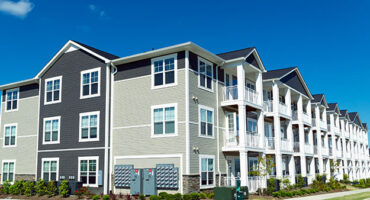

New to CREFCOA multifamily lending? Get started at the Apartment Loan Center.
Learn about all of our loan programs and lending platforms, our competitive advantage, the loan process, what our clients say, recently closed multifamily loans, which loan program or platform is best for you, and more.
New to CREFCOA commercial real estate lending? Get started at the Commercial Loan Center.
Learn about all of our loan programs and lending platforms, our competitive advantage, the loan process, which loan program or platform is best for you, and more.
New to CREFCOA capital markets commercial real estate lending? Get started at the CMBS and Capital Markets Loan Center.
Learn about CMBS, insurance company, pension, REIT and all of our commercial mortgage lending platforms for capital and secondary markets.

3 Year Income and Expense Summary Format Excel
Capital Expense 2019-2021 PDF
MHP Eligibility Analysis Excel
Organizational Chart aka Vesting Map Excel
Payroll Staffing Schedule PDF
Personal Financial Statement (Basic) Excel
Personal Financial Statement PDF
Rent Roll Detailed Excel
Rent Roll Basic PDF
Schedule of Real Estate Owned Excel
Schedule of Real Estate Owned PDF
The DSCR or debt service coverage ratio is the relationship of a property's annual net operating income (NOI) to its annual mortgage debt service (principal and interest payments). For example, if a property has $125,000 in NOI and $100,000 in annual mortgage debt service, the DSCR is 1.25.
When underwriting a commercial real estate loan, one of the most important factors used to determine the approvability of a commercial mortgage request is the DSCR, commonly referred to as the debt service.
A Land Use Restrictive Agreement (LURA) subjects the multifamily real estate to a land use restriction agreement (LURA), in which the owner gives up some of their rights of the land use in exchange for the promise of future tax credits.
The debt service coverage ratio is one of the least understood underwriting requirements for new and even seasoned commercial real estate investors. Briefly, the debt service coverage ration simply compares the subject property's net operating income to the proposed mortgage debt service (on an annual basis).
Commercial appraisals are expensive, often exceeding $2,500. Luckily, there are a few basic ratios that can be used to help you get a good idea of the value of an income producing commercial property.
Conduit loans have been around since the late 1990s and are somewhat unfamiliar to most commercial real estate investors.
Are you applying for a commercial real estate loan with Crefcoa, or any other commercial lender? Would you like to have your loan flow smoothly and close in a timely manner? We help prepare you through a little preparation.
When applying for a commercial real estate loan in is helpful to have an idea what the value of your commercial income producing property is. The following is the method of calculating a CAP rate...
When underwriting a commercial real estate loan, apartment loan, or conduit loan, there are 3 main ratios commercial lenders use to analyze the approvability of a commercial loan request. The three ratios are:
Non-recourse loans have exceptions within the loan documents that essentially transfer personal liability to the Sponsor for certain "bad boy" behaviors. Or more specifically, there are personal guarantees required with non-recourse loans.



